Clancy Tucker's Blog, page 249
August 21, 2015
22 August 2015 - RUTH FERTEL
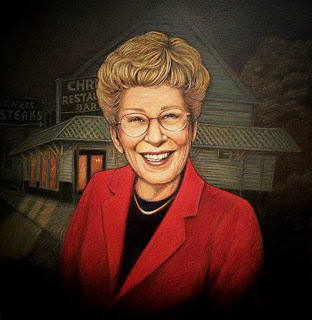
RUTH FERTEL
G'day folks,
Welcome to some facts about a very enterprising woman from the USA.
Ruth Fertel created Ruth's Chris Steak House, the world's largest collection of upscale local steakhouses.
Synopsis
Entrepreneur Ruth Fertel created Ruth's Chris Steak House, the world's largest collection of upscale local steakhouses. A single mother of two teens, she opened her first restaurant in 1965. In the 1970s, Fertel opened more restaurants and started franchising her business. She continued to grow her business over the next two decades with new locations and franchises around the world in such spots as New York City and Hong Kong. In 1999, Fertel sold a majority stake in her company to Madison Dearborn Partners. She remained a vital part of the business until her death in 2002.
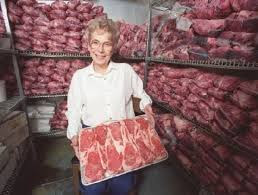
Early Life Born Ruth Udstad on February 5, 1927, Ruth Fertel grew up to be one of the food world's top business leaders with her famous Ruth's Chris Steak House chain. This Louisiana native was the daughter of an insurance salesman and a school teacher. She was a bright child, completing her college degree when she was only 19 years old. Fertel earned a bachelor's degree in chemistry from Louisiana State University.
After graduating, Fertel taught at John McNeese Junior College for a time. She married Rodney Fertel and devoted herself to raising her sons Randy and Jerry. After her divorce from Rodney in 1958, Ruth soon returned to the workforce. She found a job as a lab technician at Tulane Medical School, but she wondered how she was going to pay for her sons' college educations on her salary.
Fertel saw that a local restaurant was up for sale in a classified ad in the newspaper. She decided that she wanted to take on the challenge of running a restaurant, despite having no prior experience in the business. Fertel ended up mortgaging her house to raise the funds to buy Chris' Steak House from its owner Chris Matulich.
'The First Lady of Steak' With no restaurant experience, Fertel educated herself in every aspect of the business from the ground up. As she explained to Nation's Restaurant News in 1990, "For the first few months, I worked to learn everything—I learned to butcher meat, I learned to cook steaks, I learned to mix drinks." Fertel put in long days at the restaurant, and her hard work began to pay off.
Fertel even managed to turn disaster to her favor. In 1976, her original restaurant burnt down. Fertel didn't let this crisis slow her down for long. She didn't have the legal rights to expand or move Chris' Steak House so she added her name to the restaurant, opening Ruth's Chris, an even larger place, nearby shortly thereafter. Around this time, Fertel started to franchise her successful business concept.
Over the years, Fertel built her company into an international enterprise by increasing the number of both corporate and franchised locations. According to Restaurant Business, Fertel once said "I think I'm proudest of making my franchisees wealthy. My greatest pleasure is watching each new restaurant grow — it's like making oak trees out of acorns." She was selected as Louisiana's Restauranteur of the Year in 1984. Fertel remained an active force in the business, even after selling a majority stake in the business to Madison Dearborn Partners in 1999.
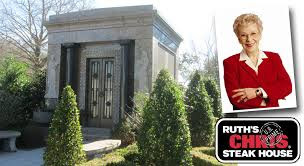
Lasting Legacy Fertel was diagnosed with lung cancer in 2000. The disease took her life two years later on April 16, 2002. She was laid to rest a few days later at Lake Lawn Metairie Cemetery where she and her best friend and business associate Lana Duke had built a mausoleum. Around the time of her death, there were more than 80 Ruth's Chris locations, which brought in more than $320 million in sales. Today there are more than 145 restaurants worldwide.
Fertel was remembered for her philanthropic efforts as well as her business acumen. As fellow New Orleans restaurateur Ella Brennan told Nation's Restaurant News, Fertel "was very generous in helping people in a quiet way." She was a supporter of Junior Achievement and other educational programs among her many charitable efforts.
 Clancy's comment: Go, Ruth! Well done.I'm ...
Clancy's comment: Go, Ruth! Well done.I'm ...


R I P
Published on August 21, 2015 03:25
August 20, 2015
21 August 2015 - WORTH THINKING ABOUT

WORTH THINKING ABOUT
G'day folks,
Here are some interesting things that may be worth thinking about.
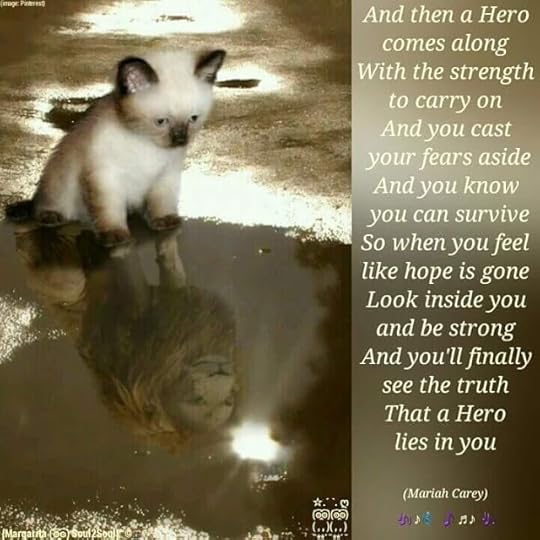
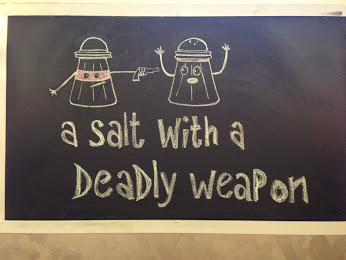
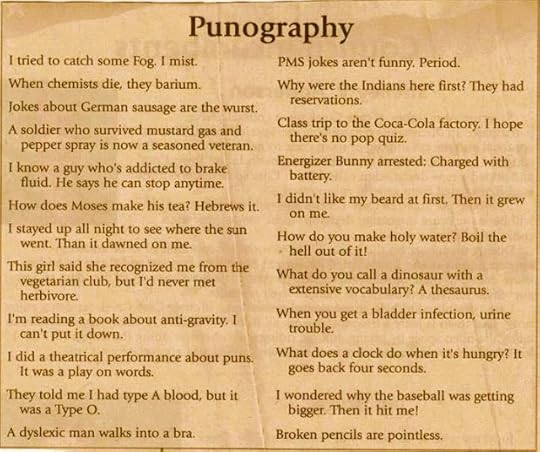

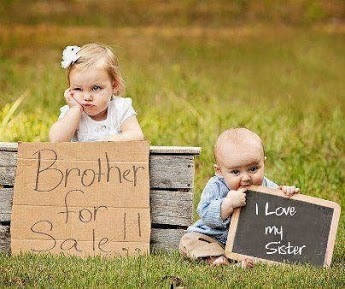
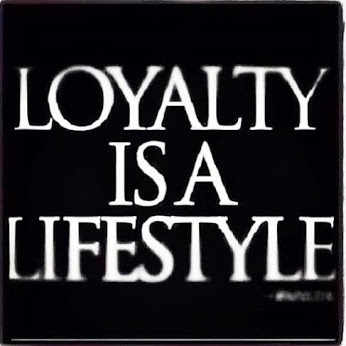
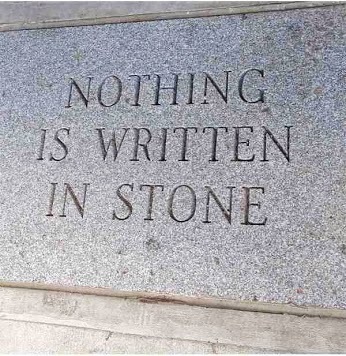
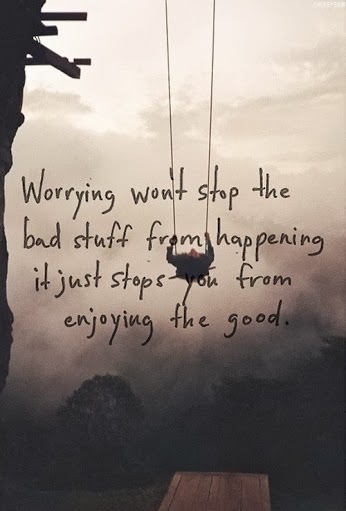

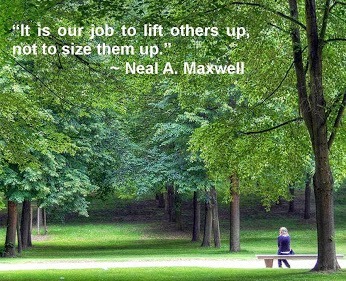
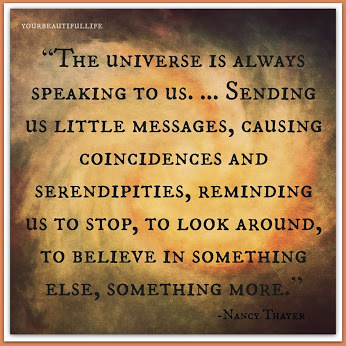
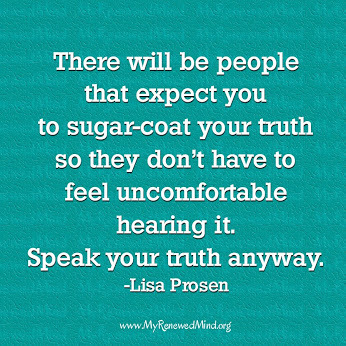
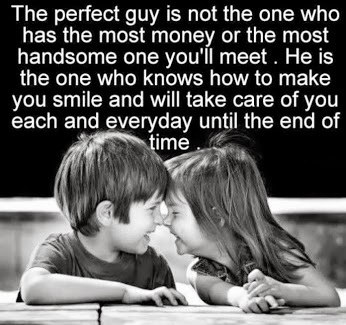
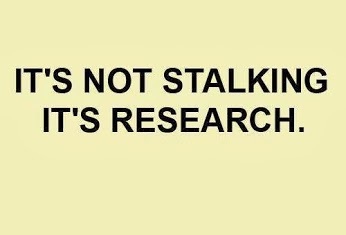
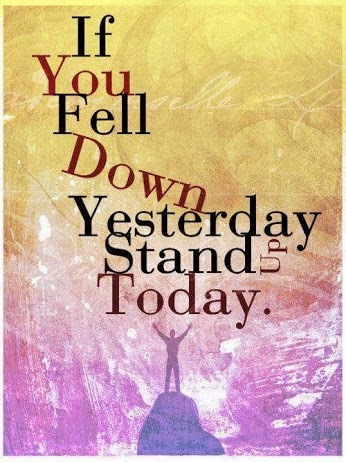
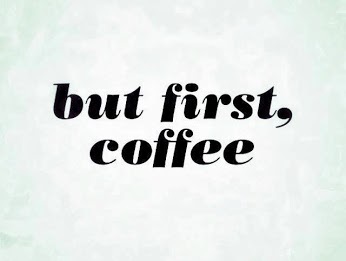
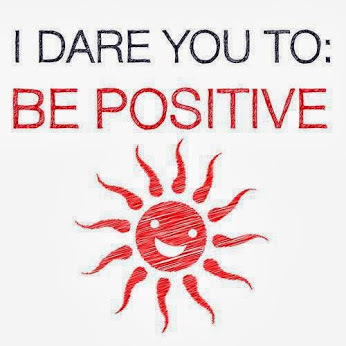

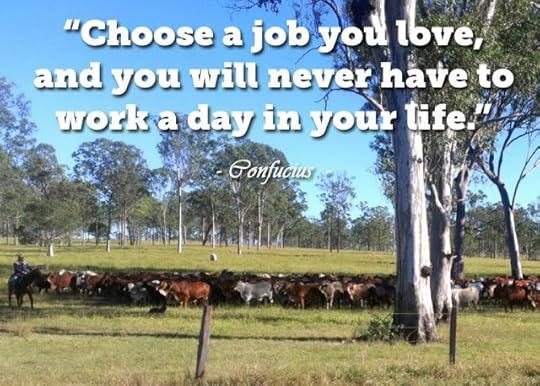

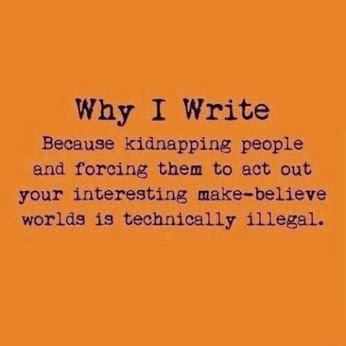
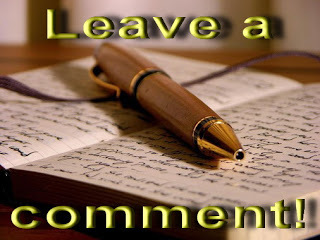
Clancy's Comment: There ya go. Some goodies here.
I'm ...

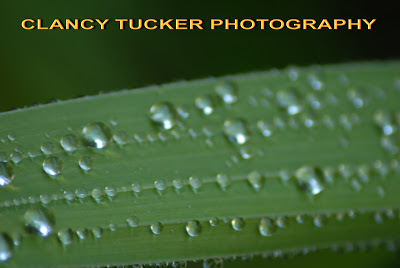
Published on August 20, 2015 03:29
August 19, 2015
20 August 2015 - NOVAK DJOKOVIC
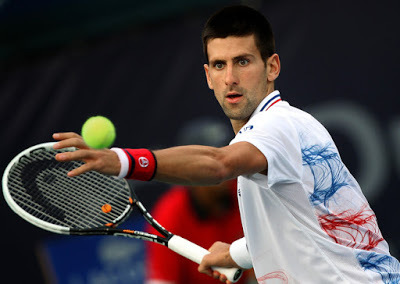
NOVAK DJOKOVIC
G'day folks,
Welcome to some facts about a brilliant tennis player and amusing man.
Serbian professional tennis player Novak Djokovic won his first of multiple Grand Slam championships in 2008 and took over the world's No. 1 ranking in 2011.
“Belief is the most common word to me, even more than hope. For one to achieve his dreams, he needs to truly believe in them.”
—Novak Djokovic
Born in Serbia in 1987, Novak Djokovic began playing tennis at age 4, and was sent to train in Germany at age 13. After a steady ascent to the top levels of the sport, he won the Australian Open in 2008 and led the Serbian national team to its first Davis Cup win in 2010. In 2011, he claimed three of four Grand Slams and compiled a 43-match winning streak en route to the world's No. 1 ranking.
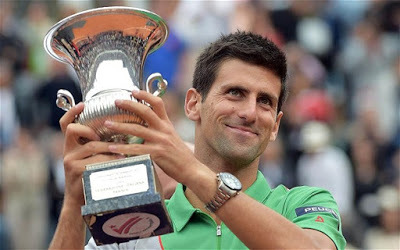
Novak Djokovic was born on May 22, 1987, in Belgrade, Serbia. Father Srdjan and mother Dijana owned the company Family Sports, which had three restaurants and a tennis academy. Djokovic's father, uncle and aunt were all professional skiers, and his father also excelled at soccer, but Djokovic was a tennis prodigy.
In the summer of 1993, at 6 years old, Djokovic was spotted by Yugoslavian tennis legend Jelena Gencic at his parents' sports complex. Gencic then worked with Djokovic for the next six years. During this time, the war in former Yugoslavia and the bombing of Belgrade meant that, for almost three months, Djokovic and his family would spend a few hours in the middle of each night in the basement. Djokovic has said that the hardships of war drove him to pursue tennis with even greater determination. At 13, he was sent to the Pilic Academy in Munich, Germany, to pursue higher levels of competition. In 2001, at age 14, he began his international career.
Commercial Success
The 14-year-old Djokovic ended 2001 as a triple European champion in singles, doubles and team competition. He won the silver medal at the World Junior Championship in a team competition for Yugoslavia. At 16, after winning five ITF tournaments, he was ranked the 40th best junior tennis player in the world. In 2004, he won his first ATP Challenger tournament in Budapest, where he started as a qualifier. The following year, he qualified at Wimbledon and reached the third round, moving him up the rankings and into the Top 100.
In the 2007 season, Djokovic played the semifinals of the French Open and Wimbledon. He won his second Masters title in Montreal, beating the Top 3 players—Roger Federer, Rafael Nadal and Andy Roddick—which made him No. 3 in the world. He competed for Serbia in the 2008 Beijing Olympics, and won a bronze medal in singles tennis. In 2010, the Serbian national team clinched the Davis Cup trophy for Serbia for the first time in history. Djokovic went on to win 43 matches in a row in 2011, the only player in the world to achieve such a run. That same year, he won the Australian Open, Wimbledon and the U.S. Open to become the world's No. 1 tennis player.
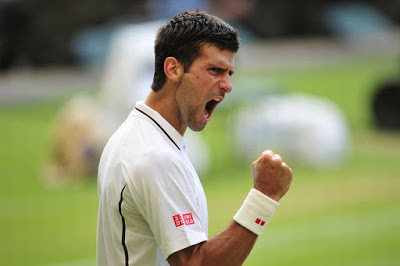
In 2012, Djokovic won the Australian Open singles title, and made it to the semifinals at Wimbledon. He was beaten in the semifinals, however, by longtime rival Roger Federer—who went on to win the Wimbledon final against Andy Murray. Later that year, Djokovic faced off against Murray himself in the final at the U.S. Open. He fought hard against Murray, but he ended up losing the match after five sets.
For the third year in a row, Djokovic took home the men's singles title at the Australian Open in 2013. He was the runner-up at Wimbledon that year, losing in the final to Andy Murray. At the U.S. Open, Djokovic was the top-ranked player. He easily dispatched his opponents in the first three rounds of play, but he lost in the final to Rafael Nadal.
In 2014, Djokovic claimed his second Wimbledon title in an epic five-set win over seven-time champion Roger Federer. It was his seventh Grand Slam title. At the 2014 U.S. Open, Djokovic defeated Andy Murray to reach the semifinals for the eighth time. He was subsequently defeated in the semifinals by Japan’s Kei Nishikori, who became the first player from that country to make it to the Grand Slam final.
Djokovic kicked off 2015 by winning the Australian Open over Andy Murray after a heated battle on the blue court. It was his fifth Australian Open title and the eighth Grand Slam title of his career. He then knocked off nine-time champion Rafael Nadal in the quarterfinals of the French Open, but fell short in his bid to claim his first French crown with a loss to Stan Wawrinka in the final.

Djokovic speaks Serbian, Italian, German and English. His two younger brothers, Marko (born in 1991) and Djordje (born in 1995), are both in school and play tennis. Djokovic's lighthearted personality has earned him the nickname "Djoker," a combination of his surname and the word "joker." He is known for his humorous off-court impersonations of fellow tennis players. Djokovic is a member of the Serbian Orthodox Christian church, and in April 2011, he was awarded the Order of St. Sava, 1st class, the highest decoration given, "for his demonstrated love for the church and the Serbian people." He participates in the Champions for Peace club, created by Peace and Sport, a Monaco-based international organization.
He created the Novak Djokovic Foundation to help disadvantaged children in Serbia obtain an education and provide resources to lead productive and healthy lives.
Djokovic began dating Jelena Ristic in 2005. The couple became engaged in 2013 and wed on July 10, 2014 – just days after his Wimbledon win. The couple welcomed their first child, a son named Stefan, on October 21, 2014.

Clancy's comment: As someone who has played a lot of tennis, I must say I love watching guys like this play. He also has a cheeky sense of humour, on and off the court.
I'm ...


Published on August 19, 2015 03:59
August 18, 2015
19 August 2015 - SOOO CUTE!

SOOO CUTE!
G'day folks,
Time to check out some cute animals in all sorts of situations.
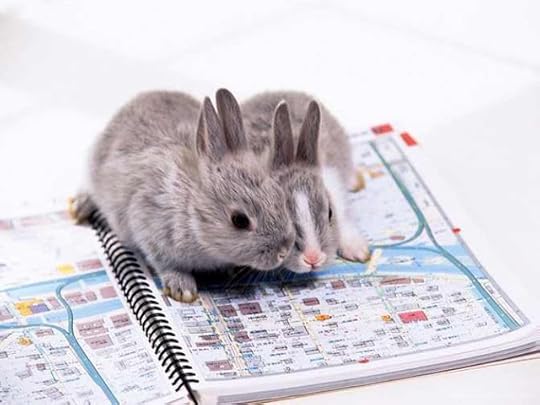
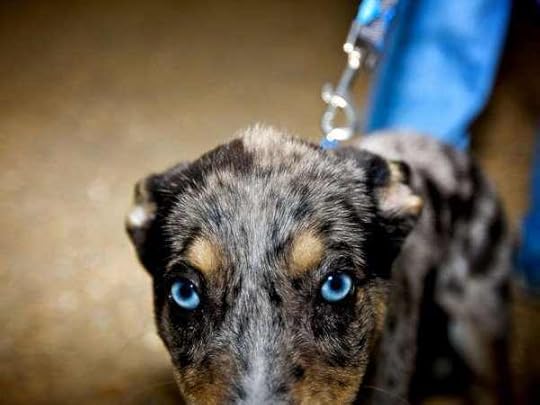


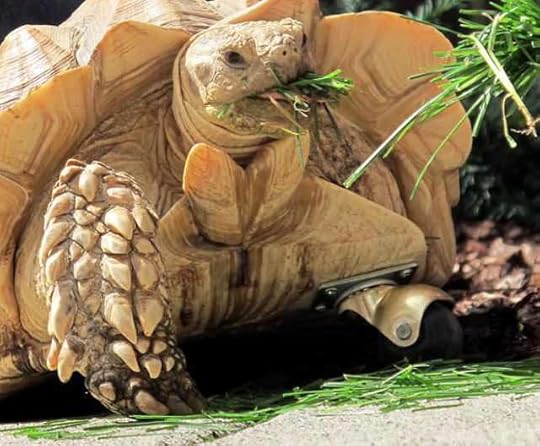
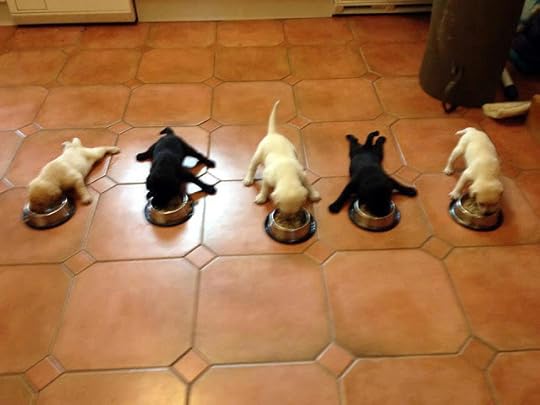

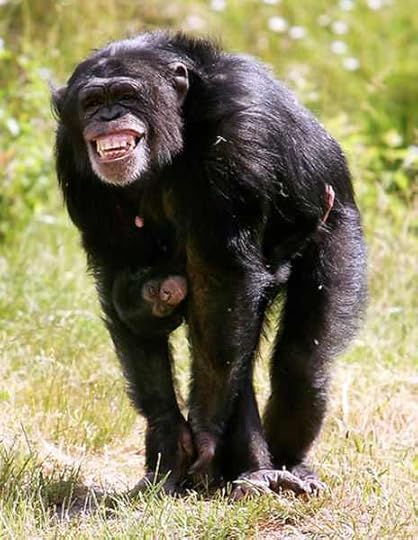

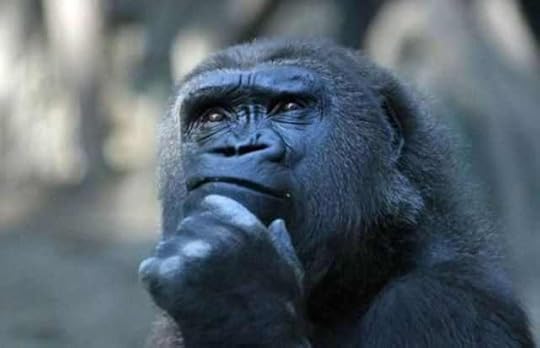
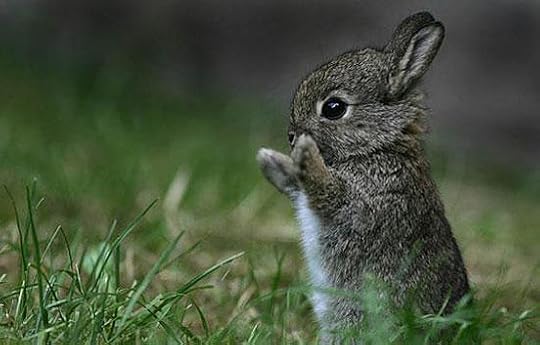
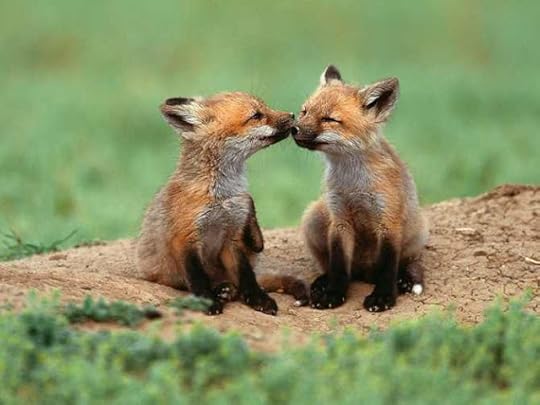

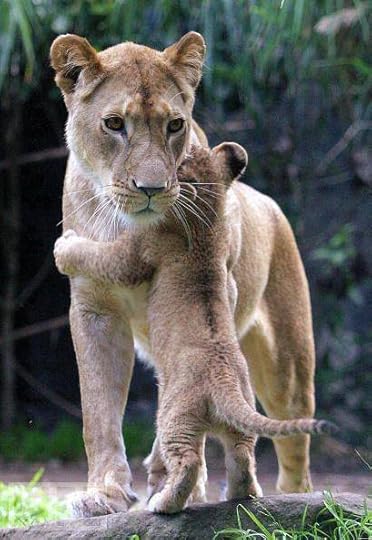

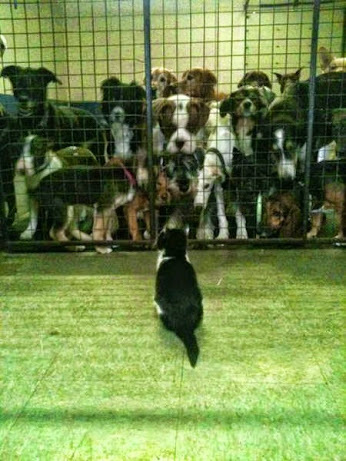
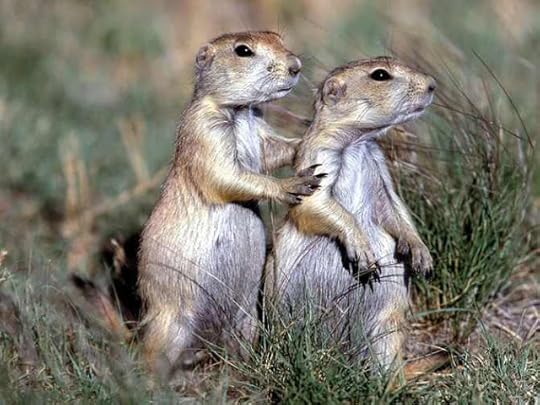
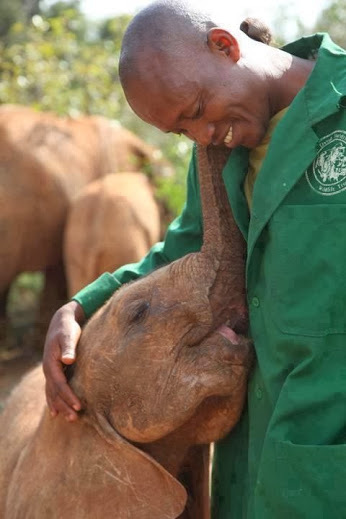

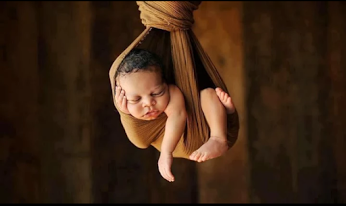
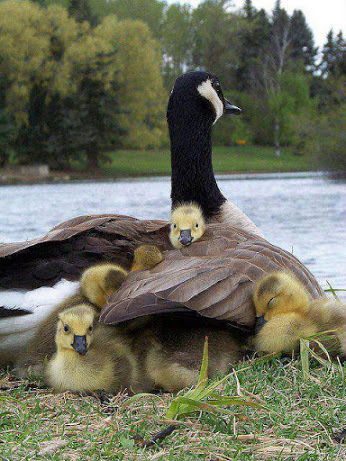
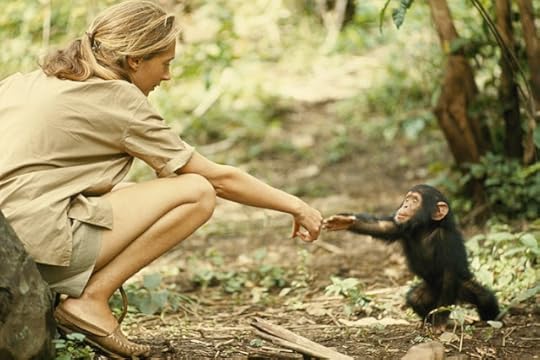

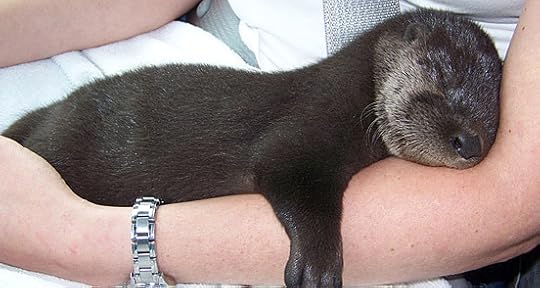
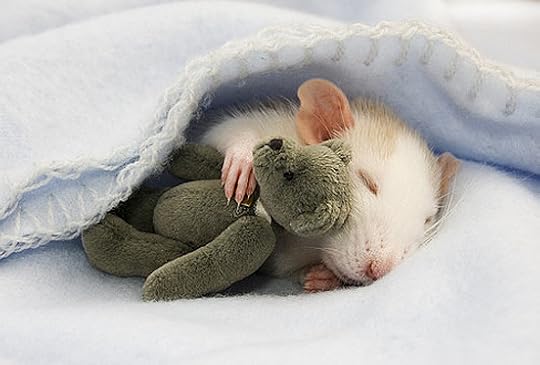
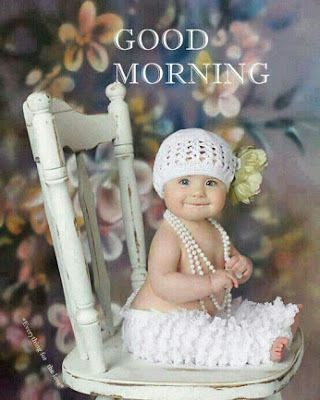

Clancy's comment: Pretty cute, eh?
I'm ...
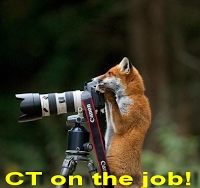
SPECIAL THOUGHTS GO OUT TO MY FRIENDS IN BANGKOK

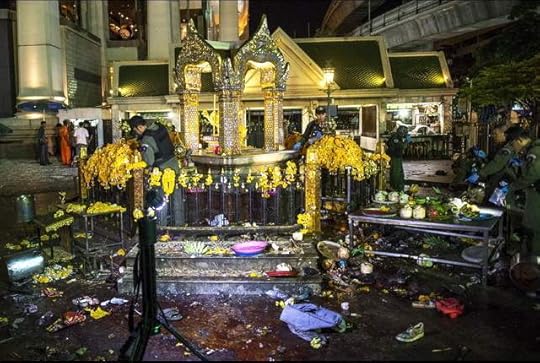
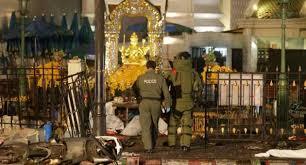
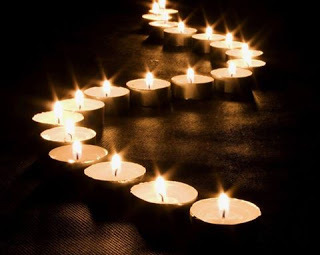
Published on August 18, 2015 03:30
August 17, 2015
18 August 2015 - VIV SANG - Guest Author
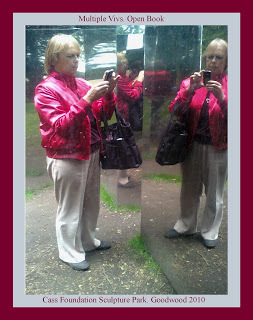
VIV SANG
- Guest Author -
G'day folks,
Time to introduce another multi-talented author from the UK. Viv is not only an author, but also a good artist and gift card designer.
Welcome, Viv ...
· TELL US A LITTLE ABOUT YOURSELF AND YOUR WRITING JOURNEY.
· Hi. The first thing I can remember writing was a story about a dog. My favourite book at the time was Shadow the Sheepdog. I think it was by Enid Blyton, but I could be wrong about that. I was only about 7 at the time, I think. It was very heavily influenced by that book.
Later, in my teens, I wrote a rather bad story about three girls who went on holiday to Italy (which I knew nothing about) and met three Italian boys.
I always enjoyed Creative Writing at school and once wrote, for homework, a story that went on for page after page. History does not record what my English teacher had to say when faced with marking it!
When I went to college, I wrote some poetry. My first publication was in the magazine of the university. It was a poem about Banning the Bomb! This is the only one that is still in existence from that time.
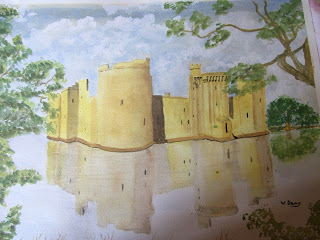
· WHEN AND HOW DID YOU BECOME A WRITER?
· I suppose I always was a writer, having written things from an early age. I did, however, not write very much between my poetry in the 60s and recently, although I did tell stories to my English classes from time to time, especially if I had a point to make.
· WHAT TYPE OF PREPARATION DO YOU DO FOR A MANUSCRIPT? DO YOU PLAN EVERYTHING FIRST OR JUST SHOOT FROM THE HIP?
· Preparation? What’s that?
Actually, I do have a good idea as to where my story is going before I put pen to paper—or should I say fingers to keyboard. The ideas swirl around my head for a few months at least, and I mentally ‘try out’ ways of putting things. If you mean do I write down a detailed plan, then the answer is no. I like the surprises that my characters give me when I geve them free rein. Quite often the story goes in quite a different direction from my original ideas.
I think that if I wrote a rigid plan, chapater by chapter, I would lose all the surprises and a lot of the enjoyment.
· WHAT DO YOU ENJOY MOST ABOUT BEING A WRITER?
· The freedom to write or not as I wish.
· WHAT IS THE HARDEST THING ABOUT BEING A WRITER?
· Procrastination. Sometimes I need to tell myself to stop pussyfooting around and get on with the story.
· WHAT WERE YOU IN A PAST LIFE, BEFORE YOU BECAME A WRITER?
· I was a teacher. I taught mainly science, although I did Maths and English as subsidiary subjects in my training, and taught both. I also taught IT from the beginning. It was then called Computer Studies and I feel that that exam was more exacting than those today. The puils (aged 16) had to write a computer program and also do an ‘extended essay’ on some aspect of computing. The most interesting one I had was about the use of computers in music.
· WHAT IS YOUR GREATEST WRITING ACHIEVEMENT?
· Completion of my first novel.
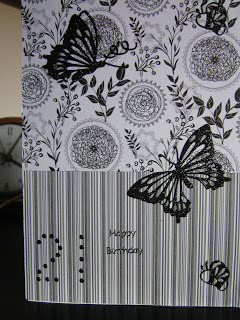
· WHAT ARE YOU WORKING ON AT THE MOMENT?
· I am trying to finish the third novel in The Wolves of Vimar Series, but am also working on a Historical Novel set in Roman Britain and a novel that I began while doing NaNoWri Mo (National Novel Writing Month when the aim is to write a 50,000 word novekl in one month).
· WHAT INSPIRES YOU?
· Everything. Sometimes I hear something on the TV (like yesterday) and it gives me an idea, sometimes it’s something someone tells me an I think ‘That would make a fantastic story’, but other times inspiration just seems to come out of the blue. Who knows where it’s come from.
· WHAT GENRE DO YOU WRITE
· Mainly Fantasy, althoug I do have a Historical Novel on the go at the moment and ideas for several followups to it.
· DO YOU HAVE ANY TIPS FOR NEW WRITERS?
· Firstly, just write. Don’t worry about typos, grammar etc. Just get your story down. Then after that, go back and correct it. Then correct it again. Stephen King said that in this process a writer should cut the novel by 10%.
Secondly, don’t give up.
Thirdly, get on all the social media you can. Don’t spend all your time plugging your books, though. People get fed up with that.
Fourthly, join writers’ groups on-line. You get fantastic advice there.
· DO YOU SUFFER FROM WRITER’S BLOCK?
· Yes, Yes, Yes.
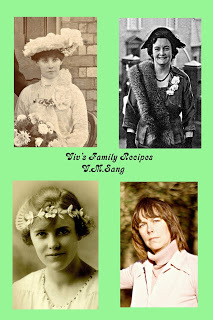
· DO YOU HAVE A PREFERRED WRITING SCHEDULE?
· I usually write in the afternoons.
· DO YOU HAVE A FAVOURITE WRITING PLACE?
· No. I write usually in my study where my computer is, but I have Dropbox and so I can save to that and write anywhere using my ipad.
· WHAT IS YOUR GREATEST JOY IN WRITING?
· Finding out about my characters. My current lot are a disparate bunch.
· WHO IS YOUR FAVOURITE AUTHOR AND WHY?
· I really don’t know. It’s often who I’ve read last.
· WHAT’S THE GREATEST COMPLIMENT YOU EVER RECEIVED FROM A READER?
· Don’t keep us waiting for the next one.
· WHAT WAS THE WORST COMMENT FROM A READER?
The Prologue is more intriguing than Chapter 1.
· WRITERS ARE SOMETIMES INFLUENCED BY THINGS THAT HAPPEN IN THEIR OWN LIVES. ARE YOU?
· Not consciously, but no doubt I am subconsciously.
· OTHER THAN WRITING, WHAT ELSE DO YOU LOVE?
I paint and draw, crochet, tat, knit, make cards, sew, do cross stitch and cook. One other thing I haven't said is that I like gardening, and along with my husband and some neighbours have taken on a local park which had become very neglected. The council only cut the grass and it was full of weeds, brambles and self-seeded ash trees.
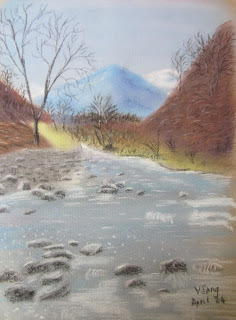
* DID YOU HAVE YOUR BOOK / BOOKS PROFESSIONALLY EDITED BEFORE PUBLICATION?
* No.
* DESCRIBE YOUR PERFECT DAY.
* I had a perfect day a couple of weekends ago. It was an important wedding anniversary and my husband and I booked a lunch at Blenheim Palace, Sir Winston Churchill’s old home. We invited family and important friends and had a lovely lunch after which we had a walk round the beautiful gardens and caught up with lots of gossip.
Afterwards we all went to a hotel in nearby Banbury where we had hired another room and laid on a buffet, and so the festivities went on through the evening. It wass a fantasstic day with so all family and friends around us.
* WHAT WOULD YOU SAY IF YOU HAD THE CHANCE TO SPEAK TO WORLD LEADERS?
* Get your fingers out and sort this world out!
* WHAT ARE YOUR PLANS FOR THE FUTURE?
* To keep on writing and hopefully increase my readership.
* WHAT FIVE BOOKS WOULD YOU TAKE TO HEAVEN?
* Oh, my goodness. That’s a hard one. Can I be a bit vague about some?
A poetry book. (not too modern. I don’t get some of the ‘poetry’ I’ve seen recently.)
The Dragonlance Chronicles by Weiss and Hickman.
Dune by Frank Herbert
The Colour of Magic by Terry Pratchett
And if there are birds in heaven, a bird book.
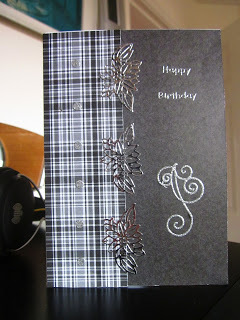
* DO YOU SEE YOURSELF IN ANY OF YOUR CHARACTERS?
* Only in Aspholessaria (Asphodel) whose name I use for my blogs, twitter account etc. She is someone who won’t necessarily do something if she thinks it’s wrong, no matter what. This gets her into a lot of trouble.
She can be somewhat feisty too, although I’m not sure how much of this is me and how much is what I would like to be.
* DOES THE PUBLISHING INDUSTRY FRUSTRATE YOU?
* Yes! They seem to be only interested in publishing writers who have already been published and are successful or celebrities (some of whose books are, I believe, ghostwritten anyway.)
* DID YOU EVER THINK OF QUITTING?
* No.
* WHAT WAS YOUR FAVOURITE MANUSCRIPT TO WRITE? WHY?
* My first. The Wolf Pack. I knew where it was going. At least I thought I did until my characters got into their stride. It grew from a Dungons and Dragons scenario I had written, but I don’t think that my players would recognise much of it now.
* HOW WOULD YOU DEFINE ‘SUCCESS’ AS A WRITER.
* Getting read and enjoyed by readers.
* WHAT SHOULD READERS WALK AWAY FROM YOUR BOOKS KNOWING? HOW SHOULD THEY FEEL?
* That they’ve had a good time. I am not trying to teeach anyone anything. At least not consciously anyway. If t hey do learn soething, then that’s good.
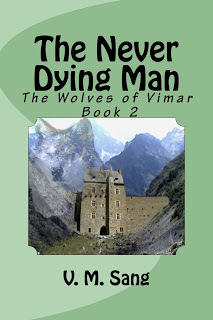
* HOW MUCH THOUGHT GOES INTO DESIGNING A BOOK COVER?
* Quite a lot. I design my own covers and it takes quite a long time and experiment to find the correct cover. In fact, because of a comment from a writer collegue, I am thinking of making some changes to the covers of my two published novels.
* WRITING IS ONE THING. WHAT ABOUT MARKETING YOU, YOUR BOOKS AND YOUR BRAND? ANY THOUGHTS?
* A nightmare. It takes up so much time and effort. I seem to have little time for writing these days with marketing my published books. I don’t actually hate the process, just the time it takes.
* ARE YOUR BOOKS SELF-PUBLISHED?
* Yes
* DESCRIBE YOURSELF IN FIVE WORDS.
* Dreamer, Polite, Sociable, Kind, Generous.
* WHAT PISSES YOU OFF MOST?
* The way society seems to be all ‘me,me,me’ these days with no thought for anyone else. This goes from parking cars in the most stupid places because it’s more convenient for the person concerned to not puttin supermarket trolleys back properly so that more will fit ito the hut.

* WHAT IS THE TITLE OF THE LAST BOOK YOU READ? GOOD ONE?
* The last book I read was Frankinstein, believe it or not. I decided I should read a few of the classics that I’d somehow missed out on. Yes, it was good.
* WHAT WOULD MAKE YOU HAPPIER THAN YOU ARE NOW? CARE TO SHARE?
* Not much. I’m not going out to work and am comfortably off. I can go on holidays when I want and am still married.
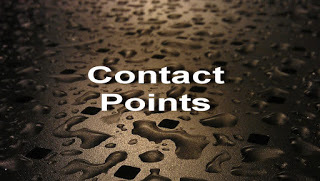
AMAZON
BLOG

Clancy' comment: As you can see, Viv has many talents. Well done. Keep going, Viv.
I'm ...
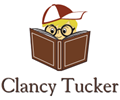

Published on August 17, 2015 03:51
August 16, 2015
17 August 2015 'SHEEZA' - New Release! - Clancy Tucker

'SHEEZA'
New Release!
A novella about disabilities,loyalty and courageG'day folks,
It's time to release one of my favourite stories - SHEEZA. This is my second novella. So, what's a novella you may ask? They say it's a story that is longer than a short story, but not long enough to be classified as a novel. Having said that, some folks often wonder why authors write novellas, rather than expanding the story to make it longer. Well, my view is pretty simple. I could easily pad out my novellas with all sorts of stuff, but that would only detract from the story. It's just adding what I call 'stuff'. Being a lover of the KISS PRINCIPLE (Keep It Simple Stupid), I'd rather write and present a story that is entertaining, rather than one that is full of padding. Not only, shorter books are often more appealing to reluctant readers, normally boys; the ones to whom I pitch my stories.
ORIGINS OF THIS STORY:
I have always loved Australian sheep dogs and cattle dogs, have spent much time on farms, and also been a farmer. So, the main star in this story is an Australian Kelpie. Why not? Mind you, Sheeza is also assisted by his owner, Danny, and Danny's best mate, Joey. You will love Joey.
However, although I wanted to write about one of my favourite dogs, I also wanted to emcompass a few other issues along the way. Issues like: bullying, disabilities, loyalty and courage. Not only but also, readers of this novella may learn a lot about Australia. Sadly, many city-based kids in Australia have never been on a farm, and I seriously doubt if some kids have actually seen a cow or horse up close and personal.

WHY CHOOSE A DOG AS A MAIN CHARACTER?
Simple. Why not? Everyone likes dogs. However, trust me. These Aussie sheep dogs are absolutely brilliant. They are smart and extraordinarily loyal. I know. I've had some. To watch these amazing animals round up sheep at a sheep dog trial is gob smacking. If you have never seen such an event before, do it before you die. You will be enthralled.
DEDICATION
This story is dedicated to all Australian cattle and sheep dogs.
It is also dedicated to kids born with a disability.

HERE IS THE BLURB:
Danny Morandi lives in a large Australian country town and is bullied by a local farm boy, Kyle ‘Mad Dog’ Fletcher, because Danny has an artificial leg, wears glasses and wants a sheep dog. Danny’s best friend, Joey, defends him in a fight with the bully and they end up before the school principal.
Inspired by videos he’s seen on English sheep dogs, Danny earns money by doing odd jobs, and his parents finally agree to him having a sheep dog after some rousing fights. He purchases a female pup born with a deformed hind leg and names her Sheeza. Danny trains her to compete in the Wanganui Sheep Dog Trials and finally enters the prestigious contest. It rains during his presentation, Danny falls over and the bully’s dog deliberately interrupts his trial, but Danny pushes on. Will he finish? Will he win?
Sheeza is stolen and Danny is heart-broken. Months pass and he loses hope of finding his dog, but Joey remains positive. With the help of friends, Danny appears on talkback radio and later that night on a famous television show, ‘Tonight Live’. His search for Sheeza has caught the attention of the entire nation. People call the station and recall seeing his dog. Then, a dog matching Sheeza’s description is located outside a diner in Bundaberg, Northern Queensland. Is it Sheeza? Will Danny find his dog?

WHO IS THIS STORY SUITABLE FOR?
Anyone who loves dogs. Yep, any age group. And, anyone who loves a great story about those who have overcome disabilities. Don't forget. If you are not born with a disability, you will probably pick up one along the way. But, how will you cope? Sheeza and Danny will give you a few tips on that score.
A FEW EXCERPTS FROM THE STORY:
"‘Cool. Let’s go dog-huntin’. Hey, Mr M. Ya won’t regret ya decision ya know. Dan knows heaps of stuff about them dogs … Trust me,’ said Joey confidently.
Bruno Morandi laughed. He liked Joey. Besides being an honest kid, and Danny’s closest friend, he’d never forgotten how Joey had refused to leave the hospital after Danny had been hit by a reckless driver. That was the day Danny lost his leg. ‘Thanks, Joey. I’ll remember that,’ said Danny’s father, staring at Joey’s black eye."

"Danny looked at one particular pup and grinned. ‘I haven’t chosen any, but that lil cutie over there seems to have picked me. See that one there with the nice face,’ said Danny, pointing.
The man glanced over his glasses and frowned at the pup he’d pointed to. ‘Ah … So, that’s the one you’d choose if you had the money?’
‘Yep. No question. While you were serving that lady, it came over to me and licked my hand. That’s a good sign you know. My Pop taught me that.’"

The man leant forward and frowned at the pup he’d chosen. ‘Did you know that pup’s the only female in the litter … And, that she’s got a deformed foot?’ ‘A deformed foot?’ Danny gasped, squinting at the pup. ‘Yeah. She’s okay, but she was born with a bent foot. She’ll be okay to walk … Just won’t be able to run as quickly as the others.’ ‘Oh,’ said Danny, once again recalling what his Pop had said. ‘Yep. She’s still the one I want.’ .... "
"‘Yeah, that’s fine. God, you really want that one, eh? Even though she’s useless and …’ The man’s face dropped when Danny pulled a trouser leg up to reveal an artificial limb. There was also a moment of silence as Danny glared at the man. The proprietor of Pets Galore looked guilty. However, he quickly changed the subject, slipping the money into his apron pocket."

"A few seconds later, Danny gave a new command. ‘Up here. Up here,’ he said, raising both hands in the air. Sheeza glanced back at him, saw the signal and carefully walked behind the mob to gently push them forward. ‘Good girl,’ said Danny. ‘Push up now. Push up, girl,’ he added. When another short, sharp whistle was heard, Sheeza carefully headed along the left flank of the mob and the sheep slowly moved forward. Seconds later, the lead sheep entered the stockyard. ‘Come-bye!’ Danny yelled. His dog obeyed the command and ran cautiously behind the remaining sheep, moving from side to side as the animals trotted into the stockyard one-by-one."

"‘Breaker. Breaker … Josh Lindsay here again. Hey, guys. I’ll personally offer a reward for anyone who can find that wonderful animal. I mean a sizeable reward. You have my word on that … Over and out.’ Danny smiled when a truck driver responded.
‘Heard you loud and clear, Josh. It’s Bernie here. We’ll do our best for you and the kid. I’m headin’ up to Darwin now in my b-double. I’ll ask at all the truck stops,’ said the interstate truck driver.
‘Thanks, matey. Appreciate it …Over and out.’"
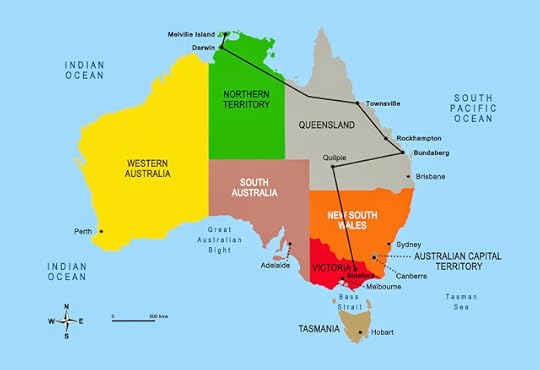
SHEEZA'S JOURNEY
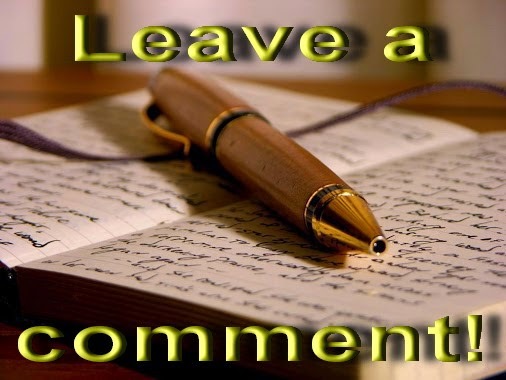
Clancy's comment: So, I've done the big sell. It's now up to you. This might be a great gift for your kids or grandkids. Head to my book shop at the top right hand corner of this page and buy a copy; paperback or e-Book. The e-Books will be up in a few days.
It is not expensive, and might be the best investment you ever made. All of my paperbacks are signed and come with a matching bookmark.
Or, you can purchase a copy via my very good mates at Morris Publishing Australia:
MORRIS PUBLISHING
Thanks for listening.
I'm ...




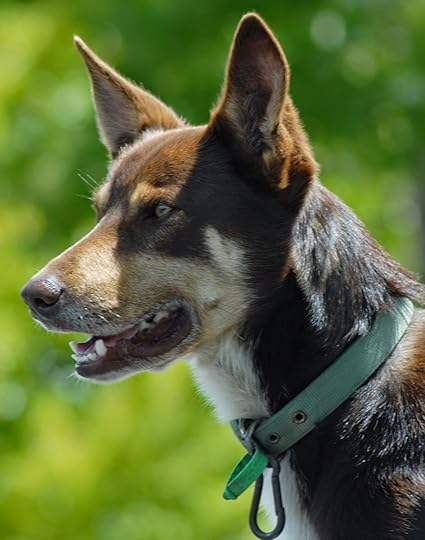
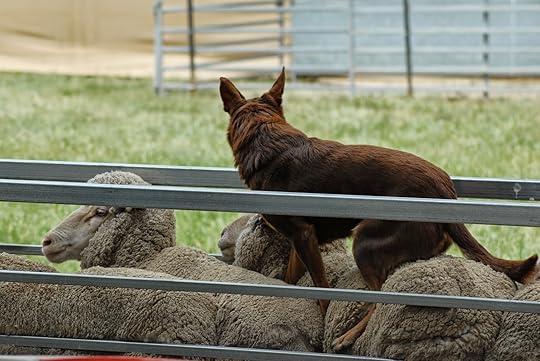

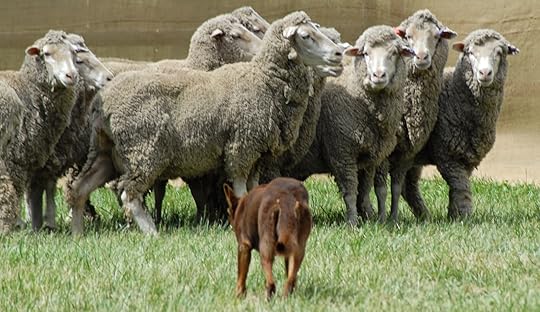
Published on August 16, 2015 03:43
August 15, 2015
16 August 2015 - WRITING TIPS FROM A GURU
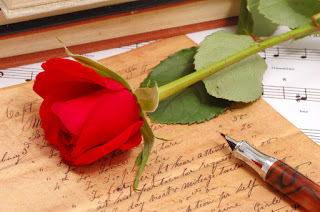
WRITING TIPS FROM A GURU
G'day folks,
Welcome to you writers out there. Today, I offer some tips from someone who should know what this is all about.
Geoff Dyer
1 Never worry about the commercial possibilities of a project. That stuff is for agents and editors to fret over – or not. Conversation with my American publisher. Me: "I'm writing a book so boring, of such limited commercial appeal, that if you publish it, it will probably cost you your job." Publisher: "That's exactly what makes me want to stay in my job."
2 Don't write in public places. In the early 1990s I went to live in Paris. The usual writerly reasons: back then, if you were caught writing in a pub in England, you could get your head kicked in, whereas in Paris, dans les cafés . . . Since then I've developed an aversion to writing in public. I now think it should be done only in private, like any other lavatorial activity.
3 Don't be one of those writers who sentence themselves to a lifetime of sucking up to Nabokov.
4 If you use a computer, constantly refine and expand your autocorrect settings. The only reason I stay loyal to my piece-of-shit computer is that I have invested so much ingenuity into building one of the great autocorrect files in literary history. Perfectly formed and spelt words emerge from a few brief keystrokes: "Niet" becomes "Nietzsche", "phoy" becomes "photography" and so on. Genius!
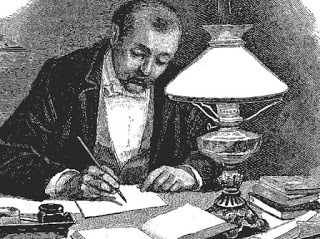
5 Keep a diary. The biggest regret of my writing life is that I have never kept a journal or a diary.
6 Have regrets. They are fuel. On the page they flare into desire.
7 Have more than one idea on the go at any one time. If it's a choice between writing a book and doing nothing I will always choose the latter. It's only if I have an idea for two books that I choose one rather than the other. I always have to feel that I'm bunking off from something.
8 Beware of clichés. Not just the clichés that Martin Amis is at war with. There are clichés of response as well as expression. There are clichés of observation and of thought – even of conception. Many novels, even quite a few adequately written ones, are clichés of form which conform to clichés of expectation.
9 Do it every day. Make a habit of putting your observations into words and gradually this will become instinct. This is the most important rule of all and, naturally, I don't follow it.
10 Never ride a bike with the brakes on. If something is proving too difficult, give up and do something else. Try to live without resort to perseverance. But writing is all about perseverance. You've got to stick at it. In my 30s I used to go to the gym even though I hated it. The purpose of going to the gym was to postpone the day when I would stop going. That's what writing is to me: a way of postponing the day when I won't do it any more, the day when I will sink into a depression so profound it will be indistinguishable from perfect bliss.

Clancy's comment: Hope these have fired you up to keep writing.
I'm ...


Published on August 15, 2015 03:48
August 14, 2015
15 August 2015 - JOHN McENROE
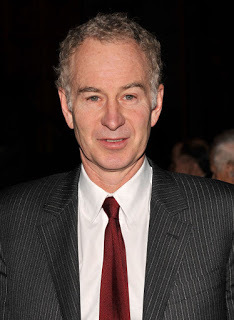
JOHN McENROE
G'day folks,
Welcome to some background information on one of the most provocative, yet greatest tennis players of all time. John McEnroe is a former tennis champion who was famous for his temperamental outbursts. He was inducted into the International Tennis Hall of Fame in 1999.
Born on February 16, 1959, in Wiesbaden, West Germany, tennis player John McEnroe made a splash by advancing to the 1977 Wimbledon semifinals at 18 years old. He went on to win several Grand Slam championships, earning fame for both his impressive skills and emotional outbursts. After retiring in 1992, he forged a successful second career as a television analyst.
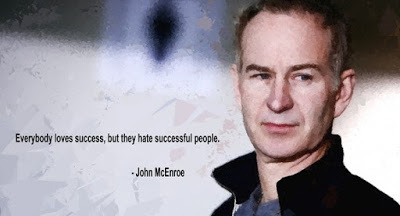
Early Life
John Patrick McEnroe Jr. was born on February 16, 1959, in Wiesbaden, West Germany, where his father, John Sr., was serving in the United States Air Force and his mother, Kay, was a surgical nurse. The oldest of three sons, his youngest brother, Patrick, also grew up to play tennis professionally.
The family moved to the New York City borough of Queens in 1960, and McEnroe primarily grew up in the community of Douglaston. At an early age, he exhibited unusually developed eye-hand coordination and athletic ability. According to his father, when John Jr. was only 2 years old, he could strike a ball with a plastic bat, and at age 4 he could hit it a considerable distance.
In 1977, a pivotal series of events in McEnroe's career took place after he graduated from high school. That year he traveled to Europe and won the French Juniors Tournament. Aiming for the junior title at Wimbledon, he had to pull out of the event when he qualified for the men's competition. The 18-year-old then surprised everyone by becoming the youngest man to reach the tournament's semifinals, where he was beaten by Jimmy Connors.
McEnroe quickly solidified his reputation as one of tennis' "bad boys," along with Connors and Ilie Nastase. His emotional outbursts were directed at linesman, opponents and himself. Pete Axthelm from Newsweek noted later, "He is a young man who raised perfectly placed strokes to a high art form, only to resort to tantrums that smear his masterpieces like graffiti." Although McEnroe played somewhat inconsistently for the remainder of the year, he was voted Tennis magazine's Rookie of the Year for 1977.
That fall, McEnroe attended Stanford University in Palo Alto, California, on a tennis scholarship. He led the school's tennis team to the NCAA Championship in 1978. After his freshman year he decided to turn pro. In the summer of 1978, McEnroe was eliminated in the first round at Wimbledon but reached the semifinals of the U.S. Open. By the end of that year, he was ranked sixth in the world in singles and fifth in doubles.
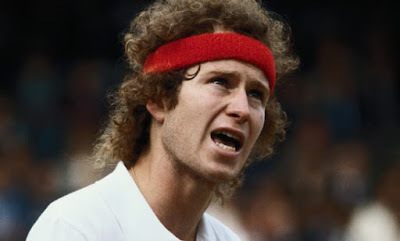
It was during this time that McEnroe began his long commitment to Davis Cup play. Tony Trabert, then the U.S. Davis Cup coach, took a risk with the 19-year-old McEnroe, who handled the pressure well, winning his matches against England to help clinch the first American Davis Cup victory in six years. In the next four months, McEnroe won four singles championships, including an important (and portentous) victory over Björn Borg in Stockholm, Sweden. In 1978, the Association of Tennis Professionals (ATP) recognized him with a Newcomer of the Year Award and ranked him No. 4 in the world, behind Borg, Connors and Vilas. In his first six months as a pro, he earned nearly half a million dollars.
Superstar Personality
After decisive victories over both Connors and Borg in 1979, McEnroe's playing style matured. It was an interesting contrast to the machine-gun like attacks of Connors and Borg. Like his idol, Rod Laver, McEnroe used finesse to keep his opponents off guard. His serve did not overpower, but he had extremely quick reflexes and an uncanny court sense—he seemed to know instinctively where to place his shots. Arthur Ashe, the late tennis champion, summed up his style in an interview with Sports Illustrated's Curry Kirkpatrick: "Against Connors and Borg, you feel like you're being hit with a sledgehammer, but McEnroe is a stiletto."
As his talent came to public attention, so did his "superstar" personality. At no tournament did his comments and disruptive actions stand out more than they did at Wimbledon, which was run by the traditional All England Club. The volatile McEnroe believed that the Wimbledon umpires were out to get him; whether or not this was true, he was stopped in the fourth round of Wimbledon in 1979. However, he bounced back to win the U.S. Open, defeating fellow New Yorker Vitas Gerulaitis to become the youngest player to win the tournament since 1948. Shortly after the triumph, he led the U.S. to victories over Argentina, Australia and Italy to allow the team to retain the Davis Cup championship.
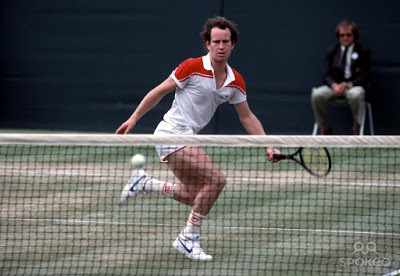
In 1980, one of tennis' most notorious rivalries between McEnroe and the unflappable Swede, Björn Borg, took shape. It began in July of that year at the Wimbledon final. Although Borg started the first set erratically, the remaining four sets saw both players in top form. The highlight of the match took place in the fourth set, which went into a tiebreaker. It took 22 minutes and 34 points for McEnroe to finally win the set. Borg eventually emerged victorious (1-6, 7-5, 6-3, 6-7, 8-6) in the epic match, though it showed the world that McEnroe had the stamina and mental toughness to be a top player.
The rivals met again at the U.S. Open, where McEnroe found himself defending the title against a determined Borg. In a match with as many games as their famous Wimbledon final, McEnroe emerged the winner (7-6, 6-1, 6-7, 5-7, 6-4). The two squared off again in the 1981 final, with McEnroe pulling out a four-set win (4-6, 7-6, 7-6, 6-4) to end the Swede's five-year reign. That September, McEnroe defended his U.S. Open title once again against Borg (4-6, 6-2, 6-4, 6-3) to become the first man since Bill Tilden to win three consecutive U.S. Open titles.
McEnroe was unable to add to his Grand Slam collection in 1982, but he was back in top form the following year, winning his second Wimbledon by crushing Chris Lewis (6-2, 6-2, 6-2). He also set a record by capturing his 28th singles victory in Davis Cup play. In 1984, McEnroe won 82 of 85 matches, including his fourth WCT final, his third U.S. Pro Indoor Championship and his second Grand Prix Masters title. He captured his third Wimbledon title, soundly defeating Connors (6-1, 6-1, 6-2), and his fourth U.S. Open title, beating Ivan Lendl (6-3, 6-4, 6-1), and finished with the No. 1 ranking for the fourth consecutive year.
Professional Decline
Although McEnroe won eight singles titles in 1985, none of them were Grand Slam events. He took a six-month sabbatical in 1986, and stepped away for several months again after drawing a suspension for an outburst in 1987. McEnroe remained a highly competitive doubles player, winning the U.S. Open in 1989 and Wimbledon in 1992, but he struggled to keep pace with the successive generation of talent in singles play. He called it quits in 1992, retiring with seven career Grand Slam singles championships, nine Grand Slam doubles titles and one more in mixed doubles.
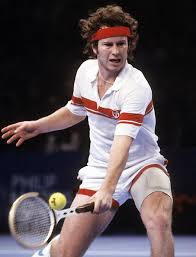
In 1986, McEnroe married actress Tatum O'Neil,his girlfriend of two years. They had two children together before divorcing in 1994. Three years later, McEnroe married singer Patty Smyth, with whom he had two more children.In 1995, McEnroe began a second career as an acclaimed television broadcaster. He continues to compete in a select number of tournaments and special events, largely for charity. Most of his charity work targets children's causes and he devotes a good deal of time to the Arthur Ashe Foundation for the defeat of AIDS. In 1999, McEnroe was inducted into the International Tennis Hall of Fame and was named captain of the Davis Cup team.
Unlike many top tennis players, McEnroe has always enjoyed a wide range of activities. An avid rock fan and guitar player, he occasionally plays at charity events. His interest in art led him to open the John McEnroe Art Gallery in New York City, which features up-and-coming young artists. Although his lack of single-minded devotion may have brought his tennis career to a halt, his charitable activities have brought to the public eye a side of McEnroe that was unseen during his reign as champion.
McEnroe debuted his eponymous talk show on CNBC in 2004; the show was canceled six months later due to poor viewership. In 2010, he founded the John McEnroe Tennis Academy in New York.

Clancy's comment: Although he often sounded like a brat on court, the same man was a master.
I'm ...

Words of one of my favourite songs!
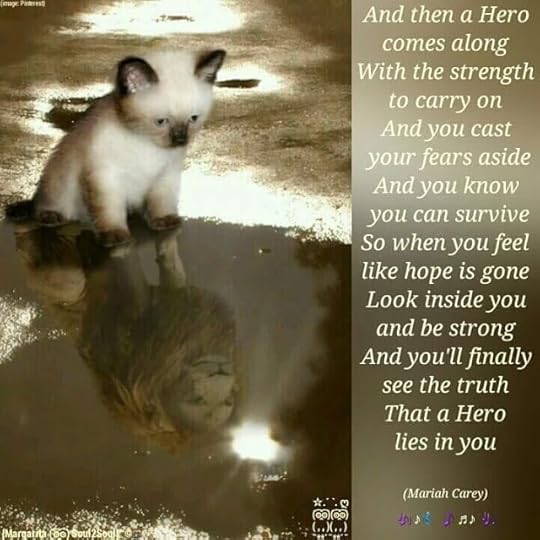
Published on August 14, 2015 02:31
August 13, 2015
14 August 2015 - THE MEANING OF COLOURS
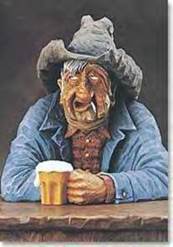
THE MEANING OF COLOURS
G'day folks,
We live in a colourful world. In many countries, colours represent various holidays; they are also used to express feelings and enliven language. Find your favorite colour and see what it means around the world.Red
For the ancient Romans, a red flag was a signal for battle.
Because of its visibility, stop signs, stoplights, brake lights, and fire equipment are all painted red.
The ancient Egyptians considered themselves a red race and painted their bodies with red dye for emphasis.
In Russia, red means beautiful. The Bolsheviks used a red flag as their symbol when they overthrew the tsar in 1917. That is how red became the color of communism.
In India, red is the symbol for a soldier.
In South Africa, red is the color of mourning.
It's considered good luck to tie a red bow on a new car.
In China, red is the color of good luck and is used as a holiday and wedding color. Chinese babies are given their names at a red-egg ceremony.
Superstitious people think red frightens the devil.
A “red-letter day” is one of special importance and good fortune.
In Greece, eggs are dyed red for good luck at Easter time.
To “paint the town red” is to celebrate.
Red is the color most commonly found in national flags.
In the English War of the Roses, red was the color of the House of Lancaster, which defeated the House of York, symbolized by the color white.
The “Redshirts” were the soldiers of the Italian leader Garibaldi, who unified modern Italy in the nineteenth century.
To “see red” is to be angry.
A “red herring” is a distraction, something that takes attention away from the real issue.
A “red eye” is an overnight airplane flight.
If a business is “in the red,” it is losing money.
Green
Only one national flag is a solid color: the green flag of Libya.
Ancient Egyptians colored the floors of their temples green.
In ancient Greece, green symbolized victory.
In the highlands of Scotland, people wore green as a mark of honor.
Green is the national color of Ireland.
A “greenback” is slang for a U.S. dollar bill.
Green means “go.” When “all systems are green,” it means everything is in order.
The green room of a concert hall or theater is where performers relax before going onstage.
The “green-eyed monster” is jealousy.
A greenhorn is a newcomer or unsophisticated person.
Green is youthful.
Being “green around the gills” is looking pale and sickly.
“Green with envy” means full of envy or jealousy.
A person with a “green thumb” is good at making plants grow.
A green, or common, is a town park.
Green is a healing color, the color of nature.
Blue
In ancient Rome, public servants wore blue. Today, police and other public servants wear blue.
In Iran, blue is the color of mourning.
Blue was used as protection against witches, who supposedly dislike the color.
If you are “true blue,” you are loyal and faithful.
Blue stands for love, which is why a bride carries or wears something blue on her wedding day.
A room painted blue is said to be relaxing.
“Feeling blue” is feeling sad. “Blue devils” are feelings of depression.
Something “out of the blue” is from an unknown source at an unexpected time.
A bluebook is a list of socially prominent people.
The first prize gets a blue ribbon.
A blue blood is a person of noble descent. This is probably from the blue veins of the fair-complexioned aristocrats who first used this term.
“Into the blue” means into the unknown.
A “bluenose” is a strict, puritanical person.
A “bluestocking” used to be a scholarly or highly knowledgeable woman.
The pharaohs of ancient Egypt wore blue for protection against evil.
The “blues” is a style of music derived from southern African-American secular songs. It influenced the development of rock, R&B, and country music.
“Blue laws” are used to enforce moral standards.
A blue ribbon panel is a group of especially qualified people.
Purple, Violet
The Egyptian queen Cleopatra loved purple. To obtain one ounce of Tyrian purple dye, she had her servants soak 20,000 Purpura snails for 10 days.
In Thailand, purple is worn by a widow mourning her husband's death.
A “purple heart” is a U.S. military decoration for soldiers wounded or killed in battle.
Purple is a royal color.
Purple robes are an emblem of authority and rank.
“Purple speech” is profane talk.
“Purple prose” is writing that is full of exaggerated literary effects and ornamentation.
Leonardo da Vinci believed that the power of meditation increases 10 times when done in a purple light, as in the purple light of stained glass.
Purple in a child's room is said to help develop the imagination according to color theory.
Richard Wagner composed his operas in a room with shades of violet, his color of inspiration.
Yellow
In Egypt and Burma, yellow signifies mourning.
In Spain, executioners once wore yellow.
In India, yellow is the symbol for a merchant or farmer.
In tenth-century France, the doors of traitors and criminals were painted yellow.
Hindus in India wear yellow to celebrate the festival of spring.
If someone is said to have a “yellow streak,” that person is considered a coward.
In Japan during the War of Dynasty in 1357, each warrior wore a yellow chrysanthemum as a pledge of courage.
A yellow ribbon is a sign of support for soldiers at the front.
Yellow is a symbol of jealousy and deceit.
In the Middle Ages, actors portraying the dead in a play wore yellow.
To holistic healers, yellow is the color of peace.
Yellow has good visibility and is often used as a color of warning. It is also a symbol for quarantine, an area marked off because of danger.
“Yellow journalism” refers to irresponsible and alarmist reporting.
White
A white flag is the universal symbol for truce.
White means mourning in China and Japan.
Angels are usually depicted wearing white robes.
The ancient Greeks wore white to bed to ensure pleasant dreams.
The Egyptian pharaohs wore white crowns.
The ancient Persians believed all gods wore white.
A “white elephant” is a rare, pale elephant considered sacred to the people of India, Thailand, Burma, and Sri Lanka; in this country, it is either a possession that costs more than it is worth to keep or an item that the owner doesn't want but can't get rid of.
It's considered good luck to be married in a white garment.
White heat is a state of intense enthusiasm, anger, devotion, or passion.
To whitewash is to gloss over defects or make something seem presentable that isn't.
A “white knight” is a rescuer.
A white list contains favored items (as opposed to a blacklist).
A “whiteout” occurs when there is zero visibility during a blizzard.
A “white sale” is a sale of sheets, towels, and other bed and bath items.
A “whited sepulcher” is a person who is evil inside but appears good on the outside, a hypocrite.
“White lightning” is slang for moonshine, a homebrewed alcohol.
A white room is a clean room as well as a temperature-controlled, dust-free room for precision instruments.
White water is the foamy, frothy water in rapids and waterfalls.
Black
The ancient Egyptians and Romans used black for mourning, as do most Europeans and Americans today.
The “Blackshirts” were the security troops in Hitler's German army, also known as the S.S.
Black often stands for secrecy.
Black humor is morbid or unhealthy and gloomy humor.
A “blackhearted” person is evil.
If a business is “in the black,” it is making money.
A “blacklist” is a list of persons or organizations to be boycotted or punished.
Black is associated with sophistication and elegance. A “black tie” event is formal.
A black belt in karate identifies an expert.
A black flag in a car race is the signal for a driver to go to the pits.
A blackguard is a scoundrel.
The ancient Egyptians believed that black cats had divine powers.
Black lung is a coal miner's disease caused by the frequent inhaling of coal dust.
Blackmail is getting things by threat.
Black market is illegal trade in goods or money.
A black sheep is an outcast.
“Blackwash” (as opposed to “whitewash”) is to uncover or bring out in the light.
A blackout is a period of darkness from the loss of electricity, for protection against nighttime air raids, or, in the theater, to separate scenes in a play.
When you “black out,” you temporarily lose consciousness.

Clancy's comment: Mm ... And, the word 'colour' is spelt differently in the USA. Just saying ...
I'm ...

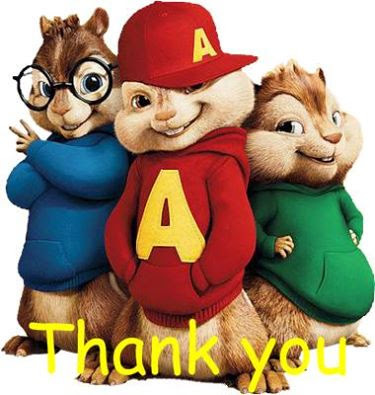
Published on August 13, 2015 03:50
August 12, 2015
13 August 2015 - TOP FIVE-STAR REVIEW FOR 'PA JOE'S PLACE'

TOP FIVE-STAR REVIEW FOR'PA JOE'S PLACE' byJennifer Douglas
G'day folks,
I try not to promote myself on my own blog, but I do give you some good news when it arrives. Most serious writers like me do not receive too much good news. However, today I share a great book review with you. This story was one of the most difficult stories I've ever written. It was an emotional roller coaster from start to finish.
The book review hereunder was written by Jennifer Douglas, a fine Australian Literary Publicist who happens to read all of my books. Jennifer also specialises in self-published authors, and good for her. Fortunately, Jennifer also gave my book five stars on Amazon. Okay. Ready for it? Here goes ...
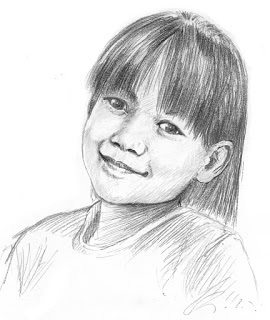
Boo Nawigamune
Pa Joe’s Place by Clancy Tucker is a sweet story that speaks volumes. At only 8 years old, and with her father dying, Boo Nawigamune is sent to live at Pa Joe’s Place, an orphanage far away from her parents and seven siblings. During her journey she survives a train derailment,a snake bite, tsunami and a fire.
Never before have I cried my way through a book like I did with Pa Joe’s Place. I cannot remember ever having cried so early in a book with the tears flowing at only chapter three. Within Pa Joe’s Place Clancy Tucker has created a book that moves you page by page. At times I felt that what Boo went through in such a short time was a little unbelievable but at the same time it sat true in my heart and it moved me. I could not do anything but love little Boo. Her strength and compassion as she travels 1700 kilometres from her home to live in an orphanage is inspiring. At such a young age this gifted girl teaches us so much.
Pa Joe’s Place is an exceptional novel that is not often seen. It is one of those gems that leaves you reeling with emotions days, weeks, months and years after you have read it. Still many months after I shed my last tear Pa Joe’s Place sits within my heart. As I write this my heart flutters and my stomach feels empty as I vividly recall the journey I traveled with Boo. I feel the loss of Boo as though she was a child of my own.
Pa Joe’s Place is a cultural journey through Thailand were the reader meets the people, the culture and the environment. It educates and it inspires. I cannot speak words powerful enough to do the content of Pa Joe’s Place justice nor the spiritual journey that it takes you on. Pa Joe’s Place gave me hope. It made me smile and it inspired me to be the best person I could be.
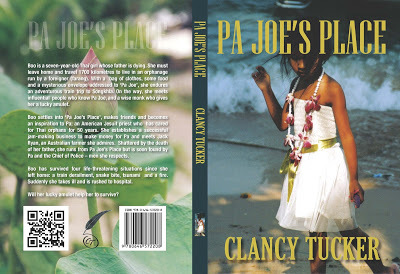
In his author’s notes Clancy Tucker writes:
I met Boo Nawigamune in 1973 when I was dealing with the death of a very close friend. Boo reached out and we became the closest of friends. To this day, she is still the most gifted and compassionate child I’ve ever met. I was the lucky one. Our world would be a far better place had she lived longer. Sadly, Boo died of leukaemia, but she was happy and focused until the end - a magnificent kid. What you saw was what you got - pure sunshine.
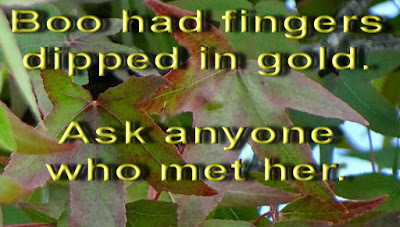
Within Pa Joe’s Place, Clancy Tucker does Boo proud. There could be no better tribute to a little girl with a pure heart of gold. The deep love, understanding and friendship that Boo and Clancy had shines throughout Pa Joe’s Place.
I will continue to carry Boo Nawigamune with me in my heart as though I knew her personally. When times are tough I will remember the journey of a little girl that showed so much strength and courage. I smile as I think of her name. I share the kindness toward others on behalf of Boo, a little girl who’s short time on earth touched so many.
Boo wanted to change lives and today she continues to do so through the writing of Clancy Tucker.

JENNIFER DOUGLAS
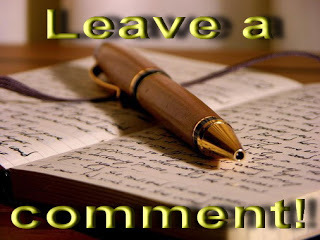
Clancy's comment: Mm ... what can I say? Thank you, Jennifer. Your reaction to this book is certainly not surprising. At the outset of writing it, I hoped that others who read about Boo and Pa Joe, would feel the magnificence of them like I did. My two main characters were real people with great strength and courage. Oh, as a side note, I taught Boo to sing Waltzing Matilda in English. What a smart kid. She learnt every word, and the tune, in one day.So, if you are keen to read a powerful story that will make you feel alive, head up to my book shop in the top right-hand corner of this post and buy a copy; paperback (with matching bookmark) or e-Book. I will personally sign any paperbacks you order. Love ya work, Jennifer!
Thanks for listening.
I'm ...
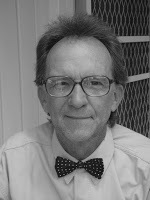


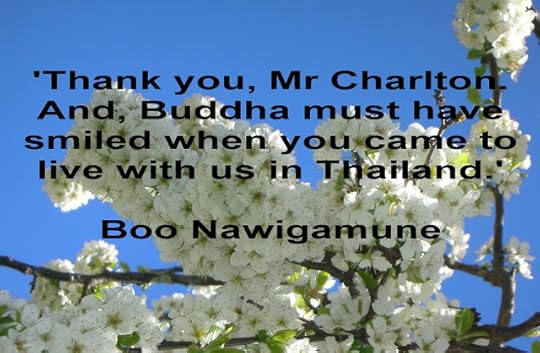
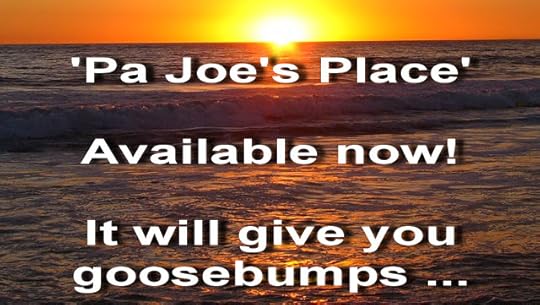
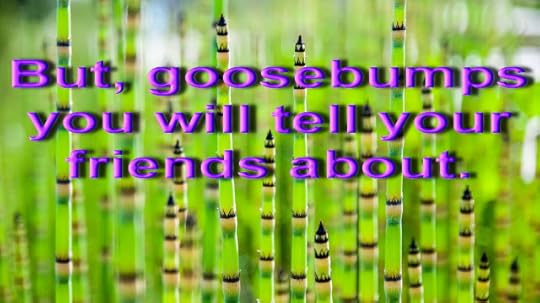
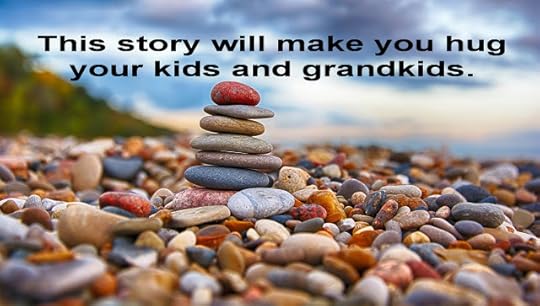
Published on August 12, 2015 04:22



